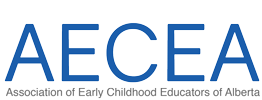A budget for now and the future
Author: Alternative Federal Budget Working Group
Source: Canadian Centre for Policy Alternatives
Format: Report
Publication Date: 24 Aug 2023
AVAILABILITY
Access online [EN]
Access online [FR]
Child care chapter [EN]
Child care chapter [FR]
Excerpts from executive summary
For 24 years, the Canadian Centre for Policy Alternatives (CCPA) has been publishing our annual Alternative Federal Budget (AFB).
The AFB is an exercise in imagination. Our purpose is to expand the collective imagination of what is possible, to instill hope in hard times, and to make crystal clear alternatives to the status quo. And these alternatives aren’t just imagined. They are clearly articulated. We’ve put a price tag on them. And we’ve found realistic ways to pay for them.
Every government budget tells you about that government’s priorities, about what matters to them. What matters to the AFB?
Excerpts from child care chapter
1. Compensate educators fairly and improve working conditions
Low wages, minimal benefits, and poor working conditions continue to plague the child care sector, with many programs operating at less than full capacity because staff positions cannot be filled. Training more educators is not an adequate solution, as graduates often choose to work in higher-paid sectors of the economy.
All levels of government must work together to develop, fund, and implement comprehensive strategies to address this recruitment and retention crisis. The goal must be to properly value the important work of Canada’s educators with competitive wages, comprehensive benefits, and improved working conditions. Structurally, improved staff wages must become part of a centre’s operational budget, not an “add-on” wage enhancement payment. The federal government must increase its annual transfer payments and earmark funds to support concrete and effective strategies as part of the funding agreement action plans.
2. Make expanding high-quality, climate-resilient, public, non-profit child care facilities a public responsibility— not a private one
Publicly led, planned, and funded expansion strategies are what we need, with sufficient public funding and consistent design standards in place to develop climate-resilient, not-for-profit, and public child care facilities that meet local community needs, along with Indigenous-led programs and facilities.
Effective expansion strategies will also require earmarked capital funding for new builds and retrofits.
3. Implement clear, consistent, operational funding models
Moving forward, the federal government should use its spending power and partnership with the provinces and territories to put in place the following:
- Provincial/territorial operational funding models with accountability mechanisms to confirm that public funds are effectively and efficiently advancing the public goals of equitable access to high-quality, inclusive programs. Provinces and territories should be required to report on their progress regularly and publicly, using clear and consistent common indicators.
- Increases in the levels of public funding in operational funding models to achieve public goals without increasing parent fees. Increased public funding is essential for improving educator compensation and working conditions, which typically account for 80 to 90 per cent of the budget in non-profit child care programs and are key determinants of program quality, including inclusion.
First Nations, Métis, and Inuit rights
Furthermore, all governments must ensure that First Nations, Métis and Inuit rights and jurisdictions are respected throughout the child care system–building transformation, as detailed in both the Indigenous Early Learning and Child Care Frameworks and the Canada-wide Early Learning and Child Care Agreements.
